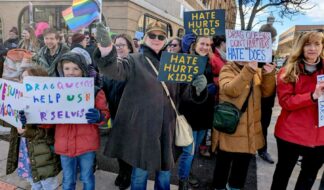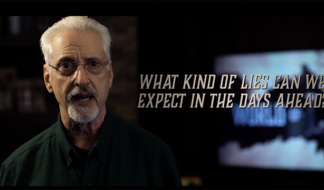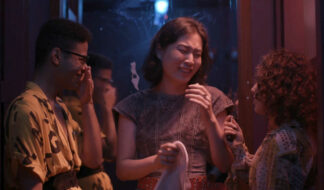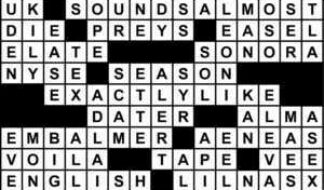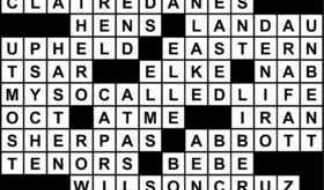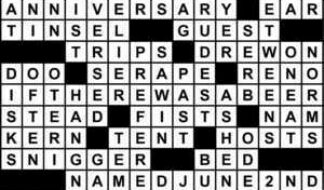By Dan Woog
The Outfield
Cheerleading developed in the early 20th century, when males began chanting at football games. During World War II, females took over – many men were in the military, while women attended college in record numbers. Cheerleaders moved to the sideline, and became part of the football and basketball shows.
In the 1970s and '80s, with the melding of gymnastics and acrobatics, cheerleading was revolutionized again. Today, thanks to coverage on ESPN and an increase in male participation, cheerleading is viewed as a legitimate sport, with its own governing organizations and rigorous competitions.
But it can't shake its reputation as – well, you know -"gay."
"Cheerleading struggles, like figure skating, because it's seen as a female sport," admits Felipe Hernandez, who cheered at Columbia University and later founded Cheer New York. "Even though colleges have scholarships, and more and more football and rugby types are cheering – they've got the perfect body types – the magazines and TV shows cater to girls. Guys like it, it's fun, but there's always the question in people's minds about why men would be cheerleaders. A lot of men are scared to cheer because they don't want to be called gay or faggy."
Cheer New York confronts that stereotype head-on. It's a coed, adult team – and it's gay.
In a sport that demands high-energy, outgoing personalities, Hernandez may be the most energetic, outgoing cheerleader of all. A native of the Dominican Republic who arrived in the U.S. 30 years ago, at age 7, he was always interested in gymnastics and dance. At Columbia, a female friend noticed he had the requisite strength, flexibility, and body awareness, and urged him to try out for the cheerleading squad. "Two other hot guys were there, too, so I figured why not?" Hernandez laughs.
Those hot guys dropped out of the squad, but he stayed – one man surrounded by 14 women. "I was concerned about ridicule," he admits. "But I had been out since I was 15, and it was a good experience."
After graduate work at Yale, where he also cheered, Hernandez became a child psychologist. In the days following 9/11 – when New York was in mourning – he and a couple of friends wanted to lift spirits. Inspired by pioneering organizations like Cheer San Francisco and Cheer Dallas, as well as the movie "Bring It On" – in which a high school cheer squad learns its captain has stolen its best routines from an inner-city team, and must suddenly devise a new one – they formed Cheer New York. Its mission was to combine cheerleading, gymnastics, dance, and acrobatic stunts to inspire hope and encouragement in audiences – and raise funds for charity – in an atmosphere where gay and straight adults could find personal enjoyment. "It was not going to be just fun and fabulous," Hernandez says.
One major activity is the Cheer for Life Fund. Through it, Cheer New York performs at charity walks for causes like HIV/AIDS, breast cancer, muscular dystrophy, and people with disabilities. They also serve smaller organizations, like the Bowery Mission and children's charities. At other performances, like cheerleading exhibitions, private parties, corporate functions, and the Gay Pride Parade, they encourage charitable contributions through "Spirit Buckets."
Of course, they also do traditional cheerleading – though not always for traditional teams. For example, they cheer on the New York Sharks, a women's professional tackle football squad.
"It's pretty funny," Hernandez says. "You've got guys on the sideline cheering for women playing real football. It's a reversal, but it's entertaining. And it's great football – those women tackle hard!"
Some members of the gay community deride Cheer New York as "feminine or queeny," Hernandez says. The founder knows that many gays can't move beyond their high school image of cheerleading, to see it as a tough, physically demanding sport. "They just remember that boy cheerleaders in high school were rejected as gay, and the girls were either very popular or completely catty."
Right now, of the 30 or so cheerleaders on the squad, all the men are gay. There are approximately 10 straight women and, Hernandez says, "one or two" lesbians.
"They're as hard to recruit as straight guys," he notes. "Lesbians don't gravitate to cheerleading. They don't relate to what it stands for now. A lot of them have bad memories from high school. We've had a few amazing lesbians – some were butch, and some were lipstick lesbians – but we want more."
Cheer New York is waiting for its first transgender member. "They can wear whatever uniform they want, male or female," Hernandez promises. "We're way beyond the sexism of guys always being the base, and girls always being the flyers. As long as you're a good cheerleader, we embrace you."
